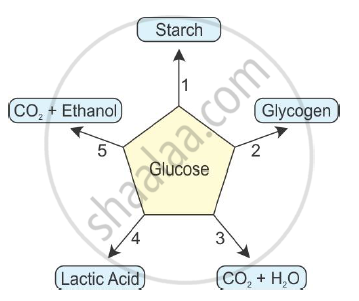Advertisements
Advertisements
Question
How is the respiratory passage kept free of dust particles?
Solution
The nasal cavity is lined by ciliated epithelium and mucous glands. The mucous glands secrete mucous. The ciliated epithelium is present on the entire lining of larynx, trachea, bronchi and bronchioles. The constant motion of cilia and mucous trap dust, micro-organisms, pollen and other minute particles present in the air. In this way, the respiratory passage is kept free of dust particles.
APPEARS IN
RELATED QUESTIONS
Given below are the end products of different reactions involving glucose.

Write the reaction number in front of the following:
(i) Anaerobic reaction =
(ii) Reaction in the human muscles =
(iii) Aerobic respiration =
(iv) Reaction in the plant cells =
(v) Reaction in the liver
What advantage over an aquatic organism does a terrestrial organism have with regard to obtaining oxygen for respiration?
What are the different ways in which glucose is oxidized to provide energy in various organisms?
Name the areas in a woody stem through which respiratory exchange of gases takes place.
What is the name of tiny air-sacs at the end of smallest bronchioles in the lungs?
Fill in the following blank with suitable word:
The actual exchange of gases takes place in the ___________ of the lungs.
State the three common features of all the respiratory organs like skin, gills and lungs.
Why is the rate of breathing in aquatic organisms much faster than in terrestrial organisms?
Explain how, the air we breathe in gets cleaned while passing through the nasal passage.
Internal respiration may be defined as:
What is the name of tissues which transport:
water and minerals in a plant?
Fill in the following blanks with suitable words:
The ___________ blood cells make antibodies whereas ___________ blood cells help in respiration.
With which human organ system (or human systems) is alveoli associated?
Answer the following in one word.
What is the muscular sheet below the lungs called?
Tick the most appropriate answer.
The products of respiration are :
Answer the following in detail.
How is the process of cellular respiration different from breathing?
Choose the odd one out in each of the following groups of four items each:
Oxyhaemoglobin, Carbaminohaemoglobin, Hypoxia, Carboxyhaemoglobin
Name the body structure concerned with the given functional activity:
Provides actual diffusion of respiratory gases in the lungs.
What is the normal percentage composition of gases in inspired and expired air respectively?
State one function of the following:
Mitochondria
Give Suitable Explanation for the Following :
Why do you shiver and why do your teeth chatter when it is very cold in winter?
Name the organs that bring about respiration.
____________ is the maximum amount of air that the lungs can hold after a maximum forceful inspiration.
Sometimes we get painful cramps in our leg muscles after running for a long time due to the accumulation of:
What is common between extensive network of blood vessels around walls of alveoli and in glomerulus of nephron?
During respiration exchange of gases take place in
Yeast is used in wine and beer industries because it respires
During the process of exhalation, the ribs move
Breathing is a process that
- provides O2 to the body.
- breaks down food to release energy.
- helps the body to get rid of CO2.
- produces water in the cells.
Which of the following gives the correct combination of functions of breathing?
